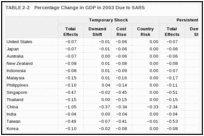Sometimes links disappear or get moved. The new link for the Army Research Laboratory (ARL) paper by Dr. Alexander Kott is here: https://apps.dtic.mil/dtic/tr/fulltext/u2/1073690.pdf
The original post is here:

Excellence in Historical Research and Analysis

Excellence in Historical Research and Analysis

Sometimes links disappear or get moved. The new link for the Army Research Laboratory (ARL) paper by Dr. Alexander Kott is here: https://apps.dtic.mil/dtic/tr/fulltext/u2/1073690.pdf
The original post is here:

The latest update on the mortality rates for the coronavirus. This is not developing well. It looks like at least three countries (Italy, Iran and the United States) do not have control of the situation. On the other hand, China seems to have partly contained the virus. On 18 February, they were reporting 74.1K cases. As of today, they are reporting 80.6K cases. This is an expansion of around 6,500 cases or an average of 382 cases a day over the last 17 days. In the last 5 days, they have only added around 800 more cases (around 160 cases a day). So, while not completely under control, if the data is correct, this is a good effort considering that they have had over 80,000 cases. The virus is now expanding faster in several other countries in the world.
Data is from Johns Hopkins CSSE 3/06/20 as of 1:33.03 PM EST. It is here: Johns Hopkins CSSE
A few more observations:
On the graph at the top of this post, the top line is the number of coronavirus cases in Mainland China (People’s Republic of China). The next line is the “Total Recovered” which is reported at 55,863 out of 101,587 cases (and 3,460 deaths). The bottom line is the number of coronavirus cases in “other locations” (meaning outside of mainland China)
Other Notes:

Another partial update on the mortality rates for the coronavirus. In my last update (29 Feb) I listed all countries with more than 60 cases. They all now have more than a hundred cases.
Data is from Johns Hopkins CSSE 3/04/20 as of 8:33.02 AM EST. It is here: Johns Hopkins CSSE
A few more observations:
On the graph at the top of this post, the top line is the number of coronavirus cases in Mainland China (People’s Republic of China). The next line is the “Total Recovered” which is reported at 51,026 out of 94,250 cases (and 3,214 deaths). The bottom line is the number of coronavirus cases in “other locations” (meaning outside of mainland China)
Other Notes:

Expected first follow-up post to my previous post. I do have a chapter in my book America’s Modern Wars (2015) on Afghanistan. Most of our work on insurgencies was focused on Iraq. Several years after we did our Iraq casualty estimate (presented on pages 15-31 and 302-307) we were asked to do a briefing or two about Afghanistan. This was a little odd, as it was not something we had studied in depth and we never have. All of our work was on Iraq or on insurgencies in general. We never specifically analyzed on Afghanistan or had a contract to do so. Still, hard to ignore Afghanistan so I ended up with the chapter on it in my book (Chapter 21, pages 253-272).
The final paragraph in that chapter reads (pages 269-270):
Given our unwillingness to step up our commitment, then the only question is whether a slower withdrawal will provide more tangible benefits than a fast withdrawal. This we have not examined. Still, this is not “winning” the war in any sense of the word winning. It is withdrawing with the situation on the ground unresolved and a government that far from democratic or stable. We will be leaving behind trainers and other support people, but limited combat troops. If history is a guide, then this government will be replaced one way or the other several years after we withdraw. What will replace it is hard to determine, but will probably include a return to some extent of the Taliban, or perhaps with them leading the new government. It is also distinctly possible that the country will return back into civil war. None of this fulfills our objectives.
What more do I need to say? I wrote that in 2014 or so…..right now the current Afghan government consist of two people claiming to be the president and the U.S. had just negotiated a complete withdrawal over the next 14 months. The negotiations between the Taliban and the Afghan government start on 10 March 2020.
Previous post:
Another partial update on the mortality rates for the coronavirus. This is developing fast enough that another update was needed. There were significant increases in the number of cases in South Korea, Italy and Iran. I am now listing all countries with more than 60 cases:
Data is from Johns Hopkins CSSE 2/28/20 as of 1:23.10 PM EST. It is here: Johns Hopkins CSSE
A few observations:

I have got a hunch that there will be multiple posts on this subject, so have already labeled this post such. The United States just signed a peace agreement today with the Taliban. The United States had agreed to reduce the presence of U.S. troops to 8,600 within 135 days (around 13 July 2020). It is currently around 13,000. The U.S. also agreed to completely withdraw all troops in 14 months (by April 2021?). In exchange, “the Taliban promise to not let extremists use the country as a staging ground for attacking the U.S. or its allies” (to quote from Yahoo news). The withdrawal is “conditions-based” to quote Secretary of Defense Mark Esper. This is more to this 4-page agreement, which I have yet to see. I may get into later.
There will be a separate peace deal between the Afghan Government and the Taliban will begin on 10 March 2020 which will included a “permanent and comprehensive ceasefire” (to quote from the U.S. State Department). We shall see how that goes. On 10 March the U.S. will review its sanctions against the Taliban with the goal of ending them by August 27.
In my book America’s Modern Wars (2015) I have a chapter called “Withdrawal and War Termination.” It is Chapter 19 and covers pages 237-242. It is a short chapter because we never really did any work on the subject. Not that we didn’t want to, but we could never get anyone to fund such work. Most of our customers were U.S. Army or Department of Defense (DOD). They were not particularly interested a decade ago in work on “withdrawal and war termination.” Now I think they should have been, but I don’t get to make those decisions.
My chapter starts:
The missing piece of analysis in both our work and in that of many of the various counterinsurgent theorists is how does one terminate or end these wars, and what is the best way to do so? This is not an insignificant point. We did propose doing exactly such a study in several of our reports, briefings and conversations, but no one expressed a strong interest in examining war termination.
Obviously, if the insurgents are driving tanks through the streets of the capital city, the war had ended, and not favorably for the counterinsurgents. But many insurgencies end with some form of negotiated settlement. Many insurgences end with the slow collapse and disintegration of the insurgency. Many of these end with some form of political compromise. Most of them end with some form of negotiation and political agreement, regardless of victor.
And then there is a multiple page discussion on 1) determining winners and losers (easy to determine insurgent victories, but “around one-third of counterinsurgent wins are clouded, or somewhat less than clear victories“), 2) force draw downs during an insurgency (there are only three cases: Malaysia, Northern Ireland and Vietnam, not counting Iraq and Afghanistan) and 3) then we go to these concluding statements:
A basic examination needs to be done concerning how insurgencies end, how withdrawals are conducted, and what the impact of various approaches towards war termination is. This also needs to address long-term outcome, that is, what happened following war termination.
We have nothing particularly unique and insightful to offer in this regard. Therefore, we will avoid the tendency to pontificate generally and leave this discussion for later. Still, we are currently observing with Afghanistan and Iraq two wars where the intervening power is withdrawing or has withdrawn. These are both interesting cases of war termination strategies, although we do not yet know the outcome in either case.
Anyhow, more to come on this.
* The site says 4, some news reports are now giving higher counts.
This update is caused by the continue expansion of cases in S. Korea, Italy, Iran and Japan. These are the four countries outside of China that report over a 100 cases. This post was updated in the afternoon because of additional Italian data.
Data is from Johns Hopkins CSSE 2/28/20 as of 4:13.12 PM EST. It is here: Johns Hopkins CSSE
A few observations:

In my morbid fascination with casualty rates it is hard for me not look at the statistics on the coronavirus and not calculate morbidity rates. Here are the stats:
Data is from Johns Hopkins CSSE as of 9:03.03 this morning. It is here: Johns Hopkins CSSE
Now, it is suspected that the number of cases are underreported. There are people that get sick and recover that are never reported. Don’t know how many this is. Suspect that the population of unreported cases exceeds the population of reported cases. Have no data to support that suspicion.
A few takeaways are:
While S. Korea and Italy are tragic and concerning, what really scares me is the uncontrolled outbreak in Iran. If there are over a thousand cases and it is not locked down and controlled, then it can spread, both in Iran and out of Iran. Iran’s neighbor to the west in Iraq (which reports 6 cases). Iraq is a country that is not always in good order. To their west is Syria, which is in civil war. What happens if the coronavirus arrives in a country in civil war. What containment is there? What government run health care is there?
To the east of Iran is Afghanistan (which reports 1 case) and Pakistan (which reports 2 cases). What happens if it spreads there? Afghanistan is in civil war as are parts of Pakistan. Are the Taliban really going to implement thorough and complete containment and provide proper healthcare?
So while the virus may be able to be contained in places like S. Korea and Italy, is it going to be contained in places like Iran, Iran, Syria, Afghanistan and Pakistan? Will this then become a permanent source of further transmission of the virus to the rest of the world, generating periodic outbreaks elsewhere and forcing systematic containment efforts for years to come?
It is hard to ignore the Coronavirus. It is kind of the biggest game changer right now, not only for the tragic mortalities, but for its economic impact and as a result, for its impact on international relations and national security. While its rate of expansion in China seems to be slower (see my previous post), it is appearing in various “hot spots” across the world. As of the moment I am writing this (after 1:00 PM Feb. 24) there were 80,350 confirmed cases worldwide and 2,705 deaths…assuming all the reporting is complete and correct. Right now in South Korea there are 977 cases and 10 deaths, in Italy there are 283 cases and 7 deaths, in Japan there are 170 cases and 1 death (and 3 from the cruise ships) and in Iran there are reported 95 cases and 16 deaths. There is a sense that the Iranian figures are low and the real numbers are higher. So outside of China there are pockets of disease in multiple locations.
See: https://gisanddata.maps.arcgis.com/apps/opsdashboard/index.html#/bda7594740fd40299423467b48e9ecf6
Beyond the immediate dangers the virus poses, there are the problems and cost of containment. China, in its efforts to control it, effectively shut down entire cities. Is that what Korea, Italy and Iran are going to have to do? This is a major economic hit.
The markets on Monday clearly picked up on this with the Dow Jones dropping over a thousand points yesterday. It is down 500 800 almost 900 points today. Markets in South Korea, Italy, etc. are getting hit even worse. Oil prices are also declining. Right now they are over $50 a barrel but they could decline to the low $40s. The exchange rate for the ruble has also declined to 65 to a dollar. Their economy and government budget is heavily impacted by oil prices. My post from 28 January:
This is clearly going to affect the world markets through this quarter and probably into the next quarter. If it is fully contained, then the economies will start to recover. The question is, can this virus be fully contained? Because of the rather “stealthy” way it spreads, with people apparently able to spread it before they show symptoms of the disease, it may take a while to fully contain. Suspect these are not the last outbreaks. Each outbreak then produces another round of costly containment efforts.
It has been estimated that the economic cost of the SARS virus of 2002-2004, which only included 8,098 documented cases and 774 deaths in 17 countries, cost 1.05% of the Chinese GDP in 2003. Hong Kong took the biggest with a 2.63% loss in GDP in 2003 while the U.S. economy had a negative 0.07% effect. It is clear that this virus is going to have a lot bigger impact. Right now, it is 80,350 cases, 2,690 cases outside of mainland China, and 2,705 deaths (with 42 of them outside of China).
One estimate is here: https://www.ncbi.nlm.nih.gov/books/NBK92473/
The Table 2.2 is here (and a lot less blurry): https://www.ncbi.nlm.nih.gov/books/NBK92473/table/ch2.t2/?report=objectonly


Source: https://gisanddata.maps.arcgis.com/apps/opsdashboard/index.html#/bda7594740fd40299423467b48e9ecf6
This graph is from Johns Hopkins. I gather the figures are only as good as the reporting from China, and that I have not looked into.
The top line is the number of coronavirus cases in Mainland China (People’s Republic of China). The next line is the “Total Recovered” which is reported at 21,250 out of 77,917 cases (and 2,361 deaths). The bottom line of “other locations” (meaning outside of China)
A related news article is here: China reports fall in new coronavirus cases but concerns grow over rising global spread